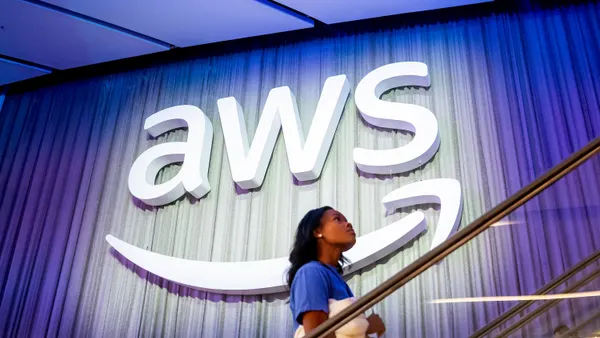As the pandemic swept the country, computer systems made of snippets of code written with the 60-year-old programming language COBOL landed in the national spotlight.
Embattled state systems are facing unforeseen levels of traffic and unemployment sites such as New Jersey's buckled, rationing applicants' access to the system according to their social security numbers.
But don't blame COBOL for the lack of adaptability of aging systems, said Bill Hinshaw, founder and CEO of Gainesville, Texas-based software company Cobol Cowboys, in an interview with CIO Dive.
"COBOL doesn't fail," said Hinshaw "It's a perceived scapegoat that, when anything goes wrong, be it in the website or the backend, it's always COBOL. That's not the case normally."
It's only when an unforeseen crisis delivers an "ungodly" increase in daily traffic that the normally-sturdy COBOL systems running on mainframes can fail to meet demand.
Taking money out of an ATM usually involves a COBOL-based system, which handles bulk transactions volumes at once. The finance and insurance industries rely heavily on COBOL applications.
The pandemic has outlined the risk of legacy systems written in COBOL. Without modernization, organizations and companies can fail to handle a surge in demand.
To get to higher digital ground, IT leaders can leverage modern technologies and software tools to ensure ailing systems can keep up with the times.
Road toward an update
The first step of modernization is all about managing expectations.
It's unlikely that an outside firm can come into a modernization project and hit the ground running.
It can take several days, even weeks just to approach an application and learn how it works, Hinshaw said. COBOL's verbose structure, often a by-product of decades of tweaks and improvements on legacy systems, makes it difficult for new talent to step in and instinctively know how a programs operates.
Once the processes and outputs are understood, a modernization initiative can take advantage of newer hardware and software to bring new life into a COBOL-based system.
Aging mainframes, reliable though they are, could create bottlenecks in a process.
In areas such as state government, a combination of tight IT budgets and the absence of competition led to critical systems running on 40-year-old mainframes. Swapping out equipment for more modern options can increase adaptability.
Software-wise, system integrations that put part of the new application in the cloud can afford it scalability,
"You're not changing the COBOL system, you're just enabling it by creating new functionality around the outside," said Stephen Hassett, president of Atlanta-based GT Software, in an interview with CIO Dive.
Efficient upgrades to a COBOL system can keep legacy code running as long as there are integrations around it to increase efficiency and scalability.
"A critical element to the best path to modernization is creating that connectivity and not trying to make those legacy systems do new things that they weren't designed to do," Hassett said.
Software to fix software
In some scenarios, IT leaders opt to put failing systems on pause while a solution is built from scratch. This is what Brandon Edenfield, managing director of app modernization at Modern Systems, an Advanced Company, refers to as the "Nirvana" option, since companies can rarely afford to pause a system.
"There are some companies out there we talked to that, these systems run mission critical applications in their environment, and they're afraid to touch them," said Edenfield.
At the other end of the spectrum, there's a lighter touch approach that focuses on picking up the application in its existing language — COBOL, for example — and simply placing it on a new platform.
Companies such as his take a more centric approach, which focuses on converting COBOL into another language such as Java or .NET. To get there, software tools can port legacy code into other languages.
As a response to the pandemic, IBM rolled out a talent development initiative aimed at getting technologists up to speed on COBOL quickly. But getting more COBOL talent into the broader tech talent pool won't fix the problem either.
Companies and organizations need to combine the strengths of "the older people that know the business rules and have the scars on their back from working, and taking advantage of the newer knowledge with the younger generation," Hinshaw said.














